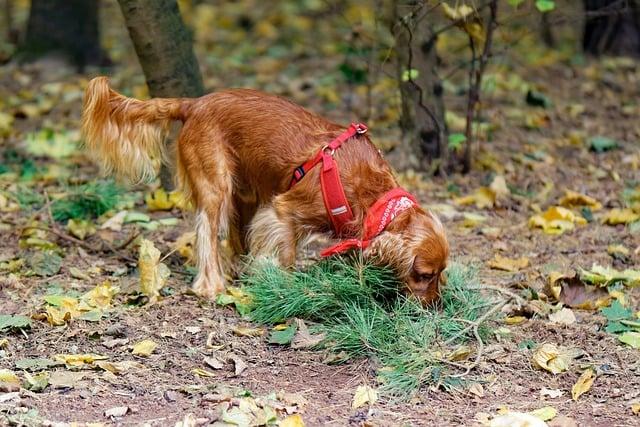In a quiet neighborhood, a playful Golden Retriever named Max greeted everyone with wagging tails and joyful barks. But one day, a new neighbor moved in with a misunderstood breed—a Rottweiler named Rex. Despite Rex’s gentle nature, whispers spread about the “dangerous” breed. One afternoon, a child approached Rex, and instead of biting, he licked her hand. This story highlights that breed alone doesn’t determine behavior; it’s training and environment that matter. Let’s focus on responsible ownership rather than breed stigma.
Contents
- Understanding the Factors That Influence Dog Aggression
- Identifying Breeds with Higher Bite Incidences
- Implementing Effective Training and Socialization Techniques
- Promoting Responsible Ownership to Mitigate Risks
- Q&A
Understanding the Factors That Influence Dog Aggression
Dog aggression is a complex behavior influenced by a multitude of factors. Understanding these elements is crucial for dog owners and potential adopters alike. **Genetics** play a significant role; certain breeds are predisposed to aggressive tendencies due to their historical roles in hunting, guarding, or herding. For instance, breeds like Rottweilers and Pit Bull Terriers have been bred for strength and protective instincts, which can manifest as aggression if not properly managed.
Another critical factor is **socialization**. Dogs that are not exposed to various people, environments, and other animals during their formative months may develop fear-based aggression. Early and ongoing socialization can help mitigate these risks, allowing dogs to learn appropriate behaviors and responses to different stimuli. A well-socialized dog is generally more adaptable and less likely to react aggressively in unfamiliar situations.
Lastly, **environmental factors** cannot be overlooked. A dog’s living conditions, including the amount of space, the presence of other pets, and the overall stress level in the household, can contribute to aggressive behavior. Dogs that feel threatened or insecure in their environment may resort to aggression as a defense mechanism. Creating a stable, nurturing environment is essential for promoting a calm and well-adjusted canine companion.
Identifying Breeds with Higher Bite Incidences
When it comes to understanding canine behavior, certain breeds have been statistically linked to higher incidences of biting. This correlation can often be attributed to a combination of factors including temperament, training, and socialization. While it’s essential to remember that any dog has the potential to bite under stress or fear, some breeds are more frequently involved in bite incidents, which can raise concerns for potential dog owners.
Research indicates that the following breeds are often cited in bite statistics:
- Pit Bull Terriers: Known for their strength and tenacity, Pit Bulls often find themselves at the center of bite reports. Their powerful jaws and muscular build can lead to severe injuries if they do bite.
- Rottweilers: This breed is protective and loyal, but their guarding instincts can sometimes manifest in aggression if not properly trained and socialized.
- German Shepherds: Frequently used in police and military roles, German Shepherds are intelligent and strong. However, their protective nature can lead to biting if they perceive a threat.
- Chihuahuas: Surprisingly, smaller breeds like Chihuahuas can also be aggressive. Their tendency to be territorial can lead to unexpected bites, especially when they feel threatened.
It’s crucial to consider that the environment and upbringing of a dog play significant roles in their behavior. A well-socialized dog, regardless of breed, is less likely to exhibit aggressive tendencies. Factors such as early training, exposure to various situations, and positive reinforcement can greatly mitigate the risk of biting incidents. Therefore, potential dog owners should focus not only on breed characteristics but also on the individual dog’s history and training.
Moreover, understanding the context in which bites occur is vital. Many incidents arise from fear, pain, or a perceived threat. Dogs that are not properly socialized or are subjected to abusive environments are more likely to react defensively. Thus, responsible ownership, including proper training and socialization, can significantly reduce the likelihood of bites, regardless of the breed. It’s essential to approach dog ownership with a commitment to understanding and meeting the needs of the animal.
Implementing Effective Training and Socialization Techniques
When it comes to fostering a well-behaved dog, the foundation lies in effective training and socialization techniques. A well-structured training program not only teaches obedience but also helps to mitigate aggressive behaviors that can lead to biting incidents. **Positive reinforcement** is a key strategy, where desirable behaviors are rewarded with treats, praise, or playtime. This approach encourages dogs to repeat good behaviors while building a trusting relationship between the dog and its owner.
Socialization is equally crucial in a dog’s development. Exposing your dog to a variety of environments, people, and other animals from a young age can significantly reduce fear and anxiety, which are common triggers for aggressive behavior. Consider incorporating the following into your socialization efforts:
- Regular visits to dog parks
- Inviting friends over with their pets
- Attending puppy classes or obedience training sessions
- Taking walks in busy areas to expose your dog to different sights and sounds
Consistency is vital in both training and socialization. Establishing a routine helps dogs understand what is expected of them, reducing confusion and anxiety. Ensure that all family members are on the same page regarding commands and rules. This unified approach reinforces learning and helps your dog feel secure in its environment. Remember, patience is key; behavioral changes take time, and a calm demeanor will yield the best results.
Lastly, it’s important to recognize that certain breeds may have predispositions to aggressive behavior, but this does not mean they are destined to bite. With the right training and socialization, even the most challenging breeds can thrive as loving companions. By investing time and effort into these techniques, you not only enhance your dog’s behavior but also contribute to a safer community for everyone.
Promoting Responsible Ownership to Mitigate Risks
Responsible ownership is crucial in ensuring the safety of both dogs and the community. By understanding the specific needs and behaviors of different breeds, owners can create a nurturing environment that minimizes the risk of aggressive incidents. **Education** is key; prospective dog owners should thoroughly research breeds to match their lifestyle and experience level. This proactive approach not only benefits the dog but also fosters a harmonious relationship with the surrounding community.
Training plays a pivotal role in shaping a dog’s behavior. **Socialization** from an early age can significantly reduce the likelihood of fear-based aggression. Owners should engage their dogs in positive interactions with other animals and people, helping them develop confidence and adaptability. Regular training sessions, whether through professional classes or at-home practices, reinforce good behavior and establish boundaries, making it easier for dogs to navigate various situations without resorting to biting.
Another essential aspect of responsible ownership is **health and well-being**. Regular veterinary check-ups ensure that dogs are physically healthy, as underlying medical issues can sometimes lead to unexpected aggression. Additionally, providing adequate exercise and mental stimulation can alleviate behavioral problems stemming from boredom or pent-up energy. Owners should prioritize their dog’s physical and emotional needs, creating a balanced lifestyle that promotes positive behavior.
Lastly, understanding the **legal responsibilities** associated with dog ownership is vital. Many regions have specific laws regarding dog breeds considered more prone to aggression. Owners must be aware of these regulations and take necessary precautions, such as using muzzles in public spaces or securing their property. By being informed and proactive, dog owners can contribute to a safer environment for everyone, demonstrating that responsible ownership is the best way to mitigate risks associated with dog bites.
Q&A
-
Which dog breeds are statistically more likely to bite?
While any dog can bite under certain circumstances, breeds often cited in bite statistics include Pit Bull Terriers, Rottweilers, and German Shepherds. These breeds are frequently involved in bite incidents due to their size and strength, but it’s essential to remember that individual temperament and training play a significant role.
-
What factors contribute to a dog’s likelihood to bite?
Several factors can influence a dog’s propensity to bite, including lack of socialization, fear, and previous trauma. Additionally, a dog’s environment, training, and the owner’s behavior significantly impact how a dog interacts with people and other animals.
-
Can training reduce the risk of dog bites?
Absolutely! Proper training and socialization can greatly reduce the likelihood of a dog biting. Positive reinforcement techniques help dogs learn appropriate behaviors and build confidence, making them less likely to react aggressively in stressful situations.
-
What should I do if I encounter an aggressive dog?
If you find yourself in a situation with an aggressive dog, it’s crucial to stay calm and avoid direct eye contact. Do not run away, as this may trigger a chase response. Instead, back away slowly and try to put an object between you and the dog, if possible.
understanding dog behavior is crucial for safety. While certain breeds may have higher bite tendencies, responsible ownership and proper training are key. Choose wisely, educate yourself, and foster a safe environment for all. Your vigilance can make a difference.




